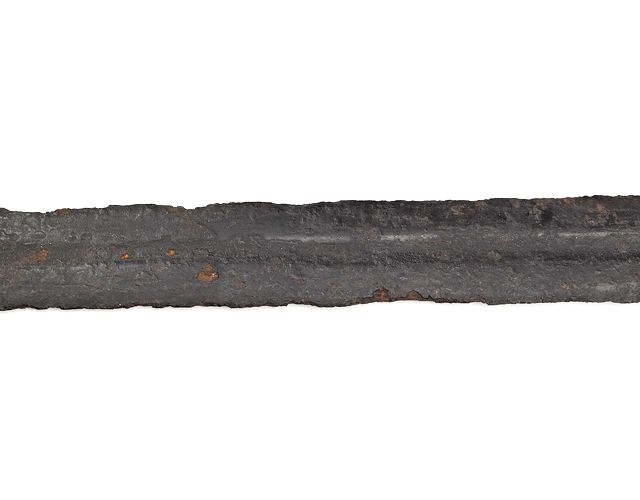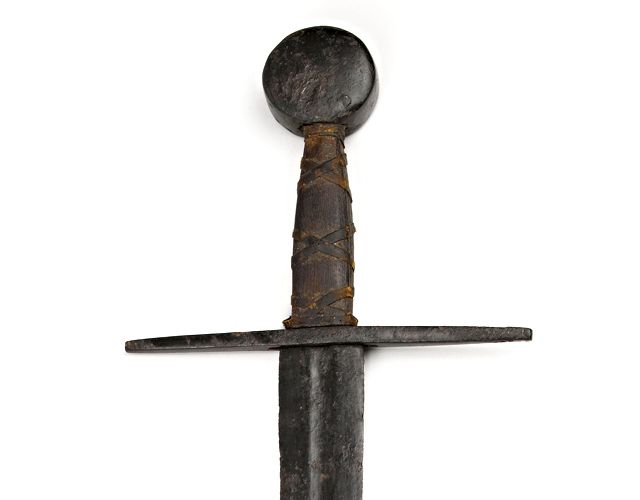Jack Loomes
Swordsperson
C.E.O. Sword-Site
Posts: 1,770 
|
Post by Jack Loomes on Feb 18, 2015 2:44:42 GMT
   Editor's Note: Text below translated by Goolge from the original French. Editor's Note: Text below translated by Goolge from the original French.Until the end of the fourteenth century, most swords are designed to a size of fencing favoring sharp blade. This is still the case of the weapon presented here, the cross line of great sobriety. Large, which gives a good "lie" in the fighting on horseback, the flexible blade is lightened by a central gutter (picture 3), and ends with a rounded tip. It is balanced by a massive circular head. Broad quillons rights protect the hand, while the rocket, wood ligated leather was reconstituted (picture 2). By its silhouette, this weapon is still very close to the thirteenth century swords and do not reflect the "revolution" of the warrior fencing that will emerge in the fourteenth century, with the adoption of rigid protections and the generalization of "armor off white ". Date: End of the XIV century Materials: Iron and wood Techniques: Wrought iron Place of creation: Germany (?) Height: 1.22 m Width: 0.23 m Weight: 0.61 kg Inventory No: J PO 1942 Background: Was part of the ancient collection of Georges Pauilhac, acquired by the Army Museum in 1964. For more information on Oakeshott Type XII swords see this extract from Ewart Oakeshott's Records of the Medieval Sword: sword-site.com/thread/127/oakeshott-type-records-medieval-swordSource: www.musee-armee.fr/ |
|
.png?width=1920&height=1080&fit=bounds)